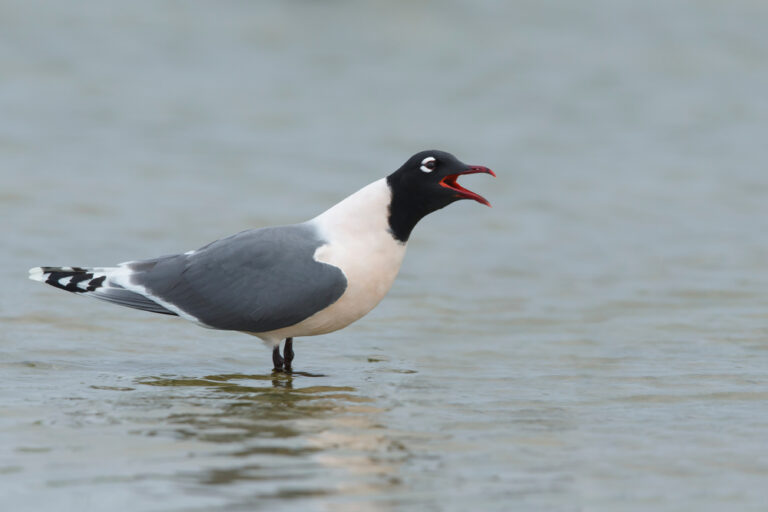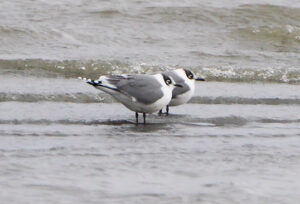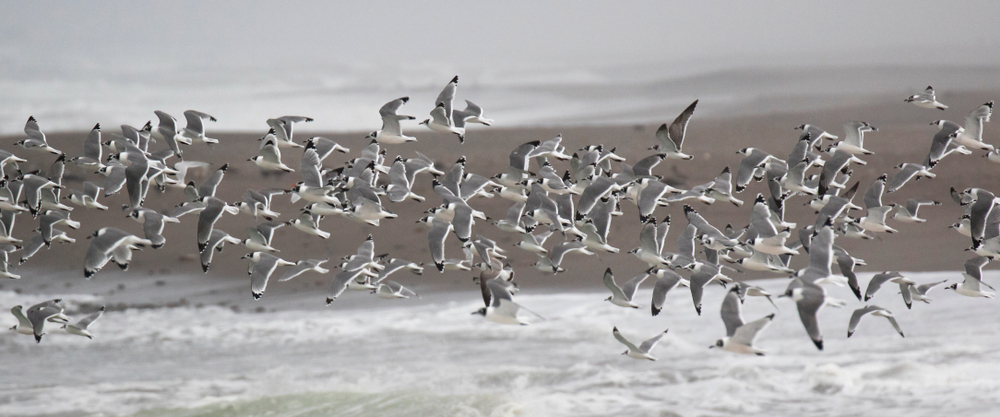Franklin’s Gull, Leucophaeus pipixcan
Bill Rowe
This small gull, especially handsome in its black-hooded breeding plumage, is the last of our four common gulls to be a Bird of the Week (the others being the Ring-billed, Herring, and Bonaparte’s Gulls). Yet “common” doesn’t describe this bird’s occurrence very well, and it conceals a remarkable life history. Franklin’s Gulls nest colonially in prairie marshes, concentrated mainly in the central provinces of Canada and the northern Great Plains states, from Minnesota to Montana; their colonies may involve many thousands of nesting pairs at a single site (such as a National Wildlife Refuge), and they may shift locations from year to year according to water levels. Come fall, they continue to stick together in large flocks as they head south through the central states, down through Mexico, and over to the Pacific coast of South America, where they winter mainly from Peru to Chile, along the beaches and nearshore ocean waters. So they are true intercontinental travelers, and they also show up as wanderers in all sorts of distant locations elsewhere in the world, from the U.K. to the Galapagos to Australia. And, perhaps connected with this travel schedule, they are almost unique in having two complete molts every year—complete in the sense that all their feathers are replaced (in most birds one molt is complete and another partial or nonexistent).
IDENTIFICATION: Franklin’s is just a little larger than Bonaparte’s Gull and notably smaller than the Ring-billed, with a relatively short, straight bill, and darker gray above than either one. In breeding plumage it has a full black hood, bold white eye-crescents, and often a pink flush on its white breast. Its wing pattern as an adult is distinctive, with a band of white inside the black wingtip. (See banner photo of adult and flock photo at bottom.) Nonbreeding adults and juveniles have a blackish half-hood on the rear of the head; juveniles also have brownish wings and a black tail band. An in-between plumage, at one year old, may look rather adult-like but lack the white band in the wingtip and therefore resemble the rarer Laughing Gull, but that species has much more black on the underside of the wingtip, besides being larger and longer-billed.
ST. LOUIS STATUS: Mostly seen on migration, April to May, and then again September to November, when the numbers are larger—but still mostly a maximum of a few dozen, occasionally 100+, not like the flocks of thousands that may land on lakes in western Missouri. The species will also put in a random appearance in midsummer or even midwinter, when it may be wearing its breeding plumage for no obvious reason.
Learn more and listen to the calls of Franklin’s Gulls
here.








